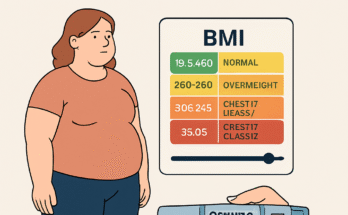As a woman navigating the transformative effects of Ozempic, you’re likely thrilled with its ability to manage type 2 diabetes or support weight loss. But if you’ve noticed more hair in your brush or shower drain, you’re not alone. Hair loss, while not a direct side effect of Ozempic (semaglutide), can be a distressing reality for some women using this medication. The good news? It’s often temporary, and with the right approach, you can minimize shedding and promote regrowth. As an expert in hair health and restoration, I’m here to guide you through the science behind Ozempic-related hair loss and share practical, evidence-based strategies to help you maintain a vibrant, healthy mane.
Understanding the Ozempic-Hair Loss Connection
Ozempic, a glucagon-like peptide-1 (GLP-1) receptor agonist, works wonders for blood sugar control and appetite suppression, often leading to significant weight loss. However, this rapid weight loss is the primary culprit behind hair shedding in many cases, not the drug itself. When your body undergoes swift changes—like losing a substantial amount of weight—it can trigger a condition called telogen effluvium. This type of hair loss occurs when a stressor pushes a large number of hair follicles into the resting (telogen) phase prematurely, causing increased shedding about three to six months later. For women, who may already be sensitive to hormonal or nutritional shifts, this can feel particularly alarming.
Beyond rapid weight loss, Ozempic’s appetite-suppressing effects can lead to reduced food intake, potentially causing deficiencies in key nutrients like biotin, zinc, iron, and protein—all essential for healthy hair growth. Hormonal fluctuations, especially changes in insulin or thyroid levels, may also disrupt the hair growth cycle, particularly in women prone to androgenetic alopecia (female pattern hair loss). Additionally, the stress of managing a chronic condition like type 2 diabetes or obesity can exacerbate hair loss, creating a perfect storm for thinning strands. Understanding these triggers is the first step to taking control and addressing the issue effectively.
Nourish Your Body for Stronger Hair
One of the most powerful ways to combat hair loss while on Ozempic is to prioritize nutrition. Rapid weight loss can deplete your body of the building blocks needed for healthy hair, so focus on a balanced diet rich in hair-friendly nutrients. Protein is critical, as hair is primarily made of keratin, a protein. Aim to include lean meats, fish, eggs, beans, or plant-based protein sources like tofu and quinoa in every meal. Iron deficiency is particularly detrimental for women, as it’s linked to hair thinning; incorporate iron-rich foods like spinach, lentils, red meat, and fortified cereals, and pair them with vitamin C-rich foods (like oranges or bell peppers) to boost absorption.
Biotin, a B-vitamin, supports hair strength and growth. While most people get enough from foods like eggs, nuts, and whole grains, a supplement may help if your diet is restricted. Zinc, found in pumpkin seeds, oysters, and beef, supports hair follicle health, while vitamin D (from fatty fish, egg yolks, or sunlight exposure) promotes new hair growth. If you suspect deficiencies, consult your healthcare provider for blood tests to identify gaps and recommend targeted supplements. A registered dietitian can also craft a meal plan to ensure you’re getting adequate nutrients without undermining Ozempic’s weight loss benefits. By fueling your body thoughtfully, you give your hair the foundation it needs to thrive.
Consult Your Healthcare Team
If you’re noticing excessive shedding, don’t hesitate to reach out to your doctor or a dermatologist. They can assess whether your hair loss is indeed linked to Ozempic-induced weight loss or if another underlying issue, like thyroid dysfunction or androgenetic alopecia, is at play. For women, hormonal imbalances, such as those caused by polycystic ovary syndrome (PCOS) or menopause, can compound hair loss, and Ozempic’s effects on insulin may amplify these changes. A thorough evaluation, including blood tests for iron, thyroid function, and hormone levels, can pinpoint the root cause and guide treatment.
In some cases, your doctor might adjust your Ozempic dosage or explore alternative medications to slow weight loss and reduce stress on your body. However, stopping Ozempic abruptly isn’t advisable, as it could disrupt your diabetes management or weight loss progress. Instead, work with your healthcare provider to create a sustainable weight loss plan—aiming for a gradual loss of 1-2 pounds per week—to minimize the shock to your hair follicles. A collaborative approach ensures you address hair loss without compromising your overall health goals.
Explore Targeted Hair Loss Treatments
For women experiencing persistent shedding, targeted treatments can make a significant difference. Topical minoxidil, available over-the-counter in 2% or 5% solutions, is a gold-standard treatment for hair loss. It works by stimulating hair follicles, extending the growth phase, and improving hair density. Apply it consistently to your scalp as directed, but be patient—results can take three to six months. Oral minoxidil, prescribed off-label, may be an option for some women, though it requires close medical supervision due to potential side effects. Finasteride, another oral medication, is typically used for male pattern hair loss but may be considered for women with androgenetic alopecia, particularly if hormonal imbalances are a factor. Always consult a dermatologist before starting these treatments to ensure they’re appropriate for you.
Platelet-rich plasma (PRP) therapy is another promising option. This involves injecting your own platelet-rich plasma into the scalp to stimulate hair follicles and promote regrowth. Studies show PRP can be effective for telogen effluvium and androgenetic alopecia, though it requires multiple sessions and can be costly. Low-level laser therapy (LLLT), using devices like laser combs or caps, increases blood flow to the scalp and may support hair health. While more research is needed, some women find LLLT a convenient, non-invasive addition to their regimen. Combining these treatments with lifestyle changes can maximize your chances of regrowth.
Protect and Style Your Hair Wisely
While you work to reverse hair loss, gentle hair care can prevent further damage. Avoid harsh chemical treatments like bleaching or perming, which can weaken fragile strands. Limit heat styling, such as blow-drying or flat-ironing, and always use a heat-protectant spray when styling is necessary. Tight hairstyles, like high ponytails or braids, can pull on hair follicles and worsen shedding, so opt for loose, low-tension styles instead. Consider a haircut designed for thinner hair, such as a layered bob or textured pixie, to create the illusion of volume and reduce stress on your scalp.
Invest in a nourishing shampoo and conditioner formulated for thinning hair, ideally containing ingredients like biotin, keratin, or caffeine to strengthen strands. Products like Nutrafol supplements, recommended by dermatologists, target root causes of hair loss and may enhance results when paired with a healthy diet. Regular scalp massages can also boost circulation, delivering nutrients to hair follicles. By treating your hair with care, you create an environment where regrowth can flourish.
Manage Stress for Healthier Hair
Stress is a known trigger for telogen effluvium, and managing a chronic condition like diabetes or obesity can take a toll on your mental health. Incorporate stress-reducing practices like meditation, yoga, or deep-breathing exercises into your daily routine. Even 10 minutes a day can make a difference. Regular exercise, which complements Ozempic’s effects, also releases endorphins that combat stress. Prioritize sleep—aim for 7-8 hours nightly—to support your body’s recovery and hair growth cycles. If hair loss is causing significant distress, consider speaking with a therapist or counselor to address the emotional impact. A holistic approach to stress management benefits both your hair and overall well-being.
FAQs
Is hair loss from Ozempic permanent?
Hair loss associated with Ozempic is typically temporary, often linked to telogen effluvium caused by rapid weight loss. Once your weight stabilizes or nutritional deficiencies are addressed, hair follicles usually resume their normal growth cycle within six to twelve months. However, if shedding persists beyond six months or you notice patchy baldness, consult a dermatologist to rule out other causes, like androgenetic alopecia, which may require specific treatments.
Can I continue taking Ozempic if I’m experiencing hair loss?
Yes, you can often continue Ozempic, but discuss your hair loss with your doctor. They may adjust your dosage, recommend nutritional supplements, or suggest a slower weight loss pace to reduce stress on your body. Stopping Ozempic abruptly could disrupt your diabetes management or weight loss goals, so a tailored plan is key to balancing hair health with overall wellness.
What supplements are best for preventing Ozempic-related hair loss?
Supplements like biotin, zinc, and iron can support hair health, especially if deficiencies are present. Biotin strengthens hair, while zinc and iron support follicle function. Vitamin D and omega-3 fatty acids may also promote growth. Always consult your healthcare provider before starting supplements to ensure they’re necessary and won’t interact with Ozempic or other medications.
Conclusion
Hair loss from Ozempic can feel overwhelming, but it’s a challenge you can tackle with the right strategies. By nourishing your body, consulting experts, exploring targeted treatments, caring for your hair gently, and managing stress, you can minimize shedding and encourage regrowth. Most importantly, remember that this side effect is often temporary, and with patience and proactive care, your hair can bounce back stronger than ever. Work closely with your healthcare team, stay consistent with your efforts, and embrace the journey to healthier hair and a healthier you.

Lisa Caldwell is a clinical health writer and certified diabetes educator with a strong background in pharmacology and metabolic health. With over 12 years of experience in patient education, she specializes in translating complex research on GLP-1 medications like Ozempic into clear, practical guidance.




